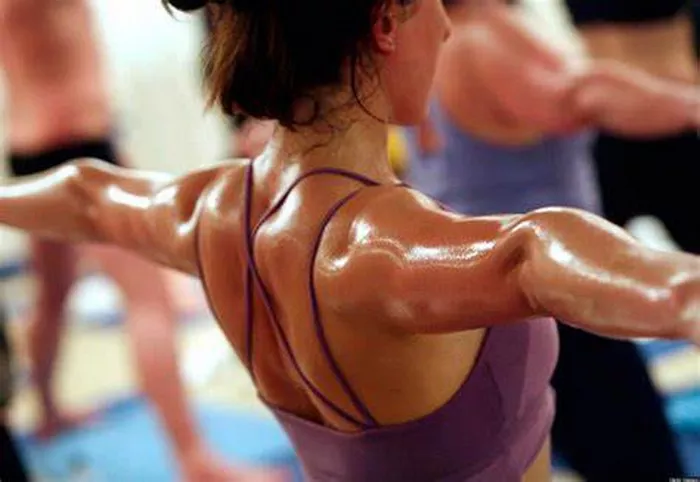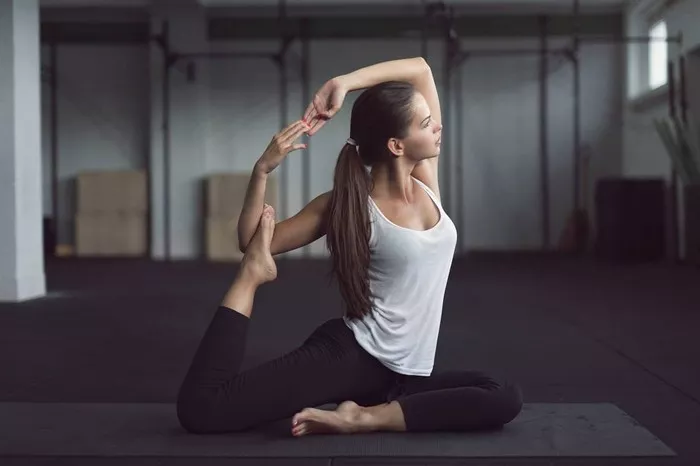In recent years, the fitness world has witnessed a surge in the popularity of various yoga styles, each offering unique benefits and experiences. Among these, hot yoga stands out as a particularly captivating and intense practice. Combining traditional yoga poses with high temperatures, hot yoga offers a challenging yet rewarding journey for both the body and mind. In this article, we delve into the depths of hot yoga, uncovering its origins, benefits, potential risks, and tips for a fulfilling practice.
Origins of Hot Yoga
Hot yoga traces its roots back to the teachings of Bishnu Ghosh, a renowned Indian yogi and the younger brother of Paramahansa Yogananda, author of the spiritual classic “Autobiography of a Yogi.” Ghosh’s approach to yoga emphasized the therapeutic benefits of heat and humidity on the body, leading him to develop a sequence of yoga postures practiced in a heated room.
The modern iteration of hot yoga gained prominence in the 1970s with the emergence of Bikram Choudhury, a former disciple of Bishnu Ghosh. Choudhury developed his signature style of hot yoga, now famously known as Bikram Yoga, which consists of a series of 26 poses and two breathing exercises practiced in a room heated to approximately 105 degrees Fahrenheit with 40% humidity.
While Bikram Yoga remains one of the most well-known forms of hot yoga, variations such as Vinyasa hot yoga, Power hot yoga, and Hot Yin yoga have since emerged, each offering its own unique sequence and approach to the practice.
The Heat Factor: Benefits of Hot Yoga
The defining characteristic of hot yoga is, unsurprisingly, the heat. Practicing yoga in a heated room amplifies the intensity of the workout and offers a myriad of benefits for both physical and mental well-being:
1. Increased Flexibility: The heat helps to warm up muscles, ligaments, and tendons, allowing for greater range of motion in yoga poses. This increased flexibility can lead to improved posture, reduced risk of injury, and enhanced athletic performance.
2. Detoxification: Sweating profusely during hot yoga helps the body rid itself of toxins and impurities through the skin. This detoxifying effect can leave practitioners feeling rejuvenated and refreshed.
Cardiovascular Conditioning: The combination of heat and physical exertion in hot yoga classes provides a cardiovascular workout, helping to strengthen the heart, improve circulation, and boost overall cardiovascular health.
3. Stress Reduction: The meditative aspect of yoga, combined with the calming effects of heat, can promote relaxation and stress relief. Many practitioners find that hot yoga helps them release tension and quiet the mind, leading to a greater sense of mental clarity and inner peace.
4. Weight Loss: The intense heat of hot yoga classes can lead to significant calorie burn, making it an effective tool for weight management and fat loss. However, it’s essential to complement hot yoga with a balanced diet and other forms of exercise for optimal results.
Potential Risks and Precautions
While hot yoga offers numerous benefits, it’s not without its risks, particularly for certain individuals:
1. Dehydration: The combination of heat and physical exertion can lead to excessive sweating and fluid loss, increasing the risk of dehydration. It’s crucial for practitioners to stay hydrated before, during, and after hot yoga classes by drinking plenty of water or electrolyte-replenishing beverages.
2. Heat Exhaustion: Prolonged exposure to high temperatures can potentially lead to heat exhaustion or heatstroke, especially for individuals with underlying health conditions or those who are not accustomed to intense heat. Practitioners should listen to their bodies, take breaks as needed, and exit the hot room if they experience dizziness, nausea, or other symptoms of overheating.
3. Overstretching: While the heat can enhance flexibility, it’s essential to avoid overstretching or pushing the body beyond its limits, as this can lead to muscle strains, ligament injuries, or joint problems. Practicing mindfulness and respecting one’s physical boundaries are key to a safe and sustainable hot yoga practice.
4. Hygiene Concerns: The hot and humid environment of hot yoga studios can create an ideal breeding ground for bacteria and fungi. Practitioners should bring their own mats and towels, practice good personal hygiene, and wipe down equipment after use to reduce the risk of infections.
Tips for a Fulfilling Hot Yoga Practice
To make the most of your hot yoga experience and ensure a safe and fulfilling practice, consider the following tips:
Stay Hydrated: Drink plenty of water before, during, and after hot yoga classes to maintain proper hydration levels and replenish lost fluids.
1. Dress Appropriately: Wear lightweight, breathable clothing that allows for maximum movement and comfort. Avoid heavy fabrics that may trap heat or restrict circulation.
2. Arrive Early: Give yourself ample time to acclimate to the heat before the start of class. Arriving early also allows you to set up your mat and mentally prepare for the practice ahead.
3. Listen to Your Body: Pay attention to how your body feels and modify poses as needed to suit your individual needs and limitations. Honor any sensations of discomfort or strain and don’t hesitate to take breaks when necessary.
4. Breathe Mindfully: Focus on deep, controlled breathing throughout your hot yoga practice to help regulate body temperature, calm the mind, and enhance overall relaxation.
5. Cool Down Gradually: After completing a hot yoga class, take your time to cool down gradually and allow your body to return to its normal temperature. Consider ending your practice with a few minutes of Savasana (corpse pose) to fully relax and integrate the benefits of your practice.
Conclusion
In conclusion, hot yoga offers a unique and invigorating approach to the ancient practice of yoga, combining physical challenge with mental clarity and emotional balance. By embracing the heat and harnessing its transformative power, practitioners can unlock a deeper connection to themselves and experience profound benefits for body, mind, and spirit. As with any form of exercise, it’s essential to approach hot yoga with mindfulness, respect for your body, and a commitment to self-care. With dedication and perseverance, the journey through the heat can lead to profound growth, healing, and self-discovery.
FAQs:
Is hot yoga good for toning?
Hot yoga can contribute to toning muscles due to the combination of heat and physical exertion. The heat helps to warm up muscles, making them more pliable and receptive to stretching and strengthening exercises. Additionally, hot yoga often involves holding challenging poses for extended periods, which can engage and tone various muscle groups, especially in areas like the core, arms, and legs. However, like any form of exercise, consistent practice and proper technique are essential for achieving noticeable toning results.
Is hot yoga good for sore muscles?
Hot yoga can provide relief for sore muscles by promoting blood circulation and facilitating muscle recovery. The heat in hot yoga classes helps to relax tight muscles, alleviate stiffness, and increase flexibility, which can reduce discomfort associated with soreness. Additionally, the dynamic movement and stretching involved in hot yoga can help release tension and improve range of motion, further easing muscle soreness. However, individuals with acute or severe muscle soreness should approach hot yoga with caution and listen to their bodies, modifying poses as needed to avoid exacerbating discomfort.
Is hot yoga good for skin?
Hot yoga may offer benefits for the skin due to the detoxifying effect of sweating profusely during practice. Sweating helps to unclog pores, remove toxins and impurities from the skin, and promote a healthy complexion. The increased blood flow and circulation stimulated by hot yoga can also contribute to a radiant glow and improved skin tone. However, it’s essential to maintain proper hygiene practices, such as cleansing the skin after class, to prevent sweat and bacteria buildup that could potentially lead to skin issues. Additionally, staying hydrated before, during, and after hot yoga sessions is crucial for maintaining skin health and hydration.


















